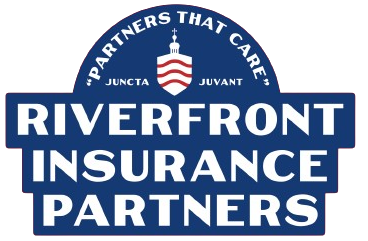When disaster strikes, your home can suffer significant damage, both inside and out. Tornadoes, floods, wildfires, and other unexpected events can turn life upside down in a matter of minutes. This is when your home insurance becomes one of your most critical financial safeguards. But not all policies cover every type of disaster the same way. Understanding what’s actually covered can help you make smarter choices and ensure you’re fully protected before the storm hits.
Table of Contents
What Natural Disasters Are Typically Covered by Home Insurance?
Most standard homeowners insurance policies cover a wide range of disasters, but there are a few exceptions that often require separate policies or endorsements. Here’s a general breakdown:
Covered events usually include:
- Windstorms and tornadoes
- Hail damage
- Fire and smoke
- Lightning strikes
- Damage from the weight of snow or ice
- Falling objects (like a tree)
- Vandalism or civil disturbance (if related to a larger event)
Events usually not covered unless you add coverage:
- Flooding from rising water (requires separate flood insurance)
- Earthquakes (requires a separate policy or rider)
- Sinkholes (coverage varies by state and provider)
- Landslides or mudslides
- Sewer or drain backups (often optional coverage)
If you’re in Covington or nearby areas prone to flooding from the Ohio River, it’s especially important to ask about flood insurance through FEMA’s National Flood Insurance Program or a private insurer.
What Parts of My Home Are Protected?
When your home suffers a natural disaster that is covered by your policy, here’s what your insurance may help you pay for:
- Dwelling Coverage
- This protects the physical structure of your home, including the roof, walls, windows, and foundation.
- For example, if a tornado rips off your roof, this portion of your policy will help pay for repairs or a full rebuild if necessary.
- Detached Structures
- This includes garages, fences, sheds, and other buildings on your property.
- Damage from a covered peril like a windstorm would apply here as well.
- Personal Property
- Your belongings, such as furniture, electronics, clothing, and appliances, are covered if they’re damaged or destroyed in a covered disaster.
- You may be reimbursed for the actual cash value or replacement cost, depending on your policy.
- Loss of Use / Additional Living Expenses
- If your home becomes uninhabitable, this part of your policy can cover hotel stays, meals, and other expenses while your home is being repaired.
- Liability Protection
- Though not disaster-specific, if someone gets injured on your property during a storm cleanup and tries to sue, liability coverage can protect you legally and financially.
Does My Home Insurance Cover Temporary Repairs After a Storm?
Yes, most policies will reimburse you for reasonable temporary repairs you make to prevent further damage after a disaster. This could include:
- Boarding up broken windows
- Placing a tarp on a damaged roof
- Removing wet carpet or debris to prevent mold
Keep your receipts, take photos of the damage before and after, and contact your insurer immediately.
What Should I Do After a Natural Disaster Hits My Home?
- Ensure Safety First
- Evacuate if necessary and don’t return until local authorities say it’s safe.
- Document the Damage
- Take photos and videos of all affected areas and items.
- Prevent Further Damage
- Make minor temporary repairs if safe to do so.
- File a Claim Promptly
- Contact your insurance agent as soon as possible. Riverfront Insurance Partners offers quick, compassionate service when you need it most. Visit our home insurance page for more details.
- Keep Track of Expenses
- Save all receipts related to temporary housing, meals, or repairs.
Not all policies are created equal, and not all disasters are automatically covered. That’s why it’s crucial to review your policy annually and ask questions about specific scenarios that might affect your region. If you’re unsure about your current home insurance coverage or need help customizing a policy to better protect your property, Riverfront Insurance Partners in Covington, KY, is here to help.
Give us a call at 859-512-8325, visit riverfrontinsurancepartners.com, or stop by our Google Maps listing to speak with a trusted local agent today. We’ll help ensure that when the next storm rolls in, your coverage won’t leave you out in the rain.
